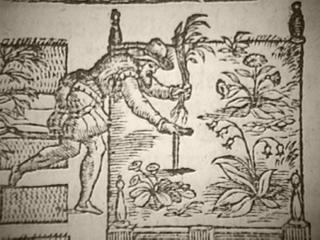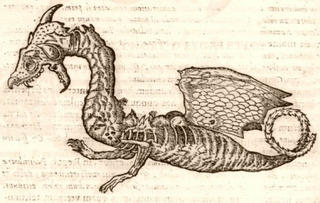
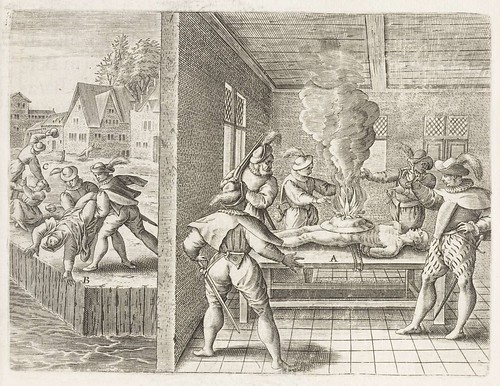


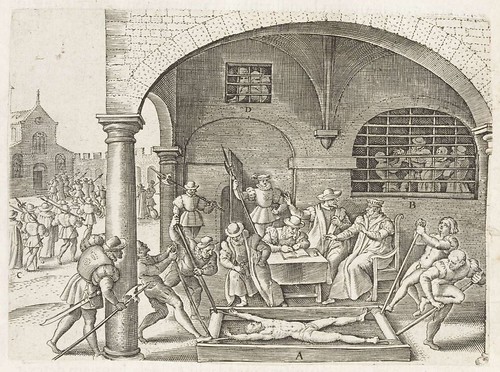

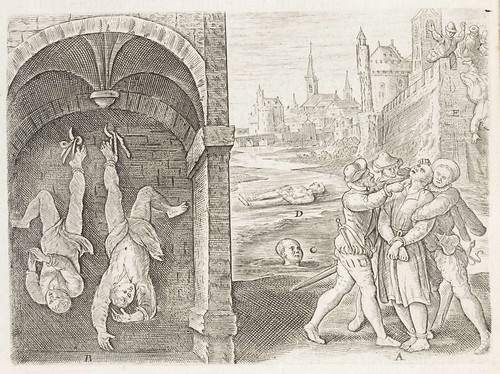
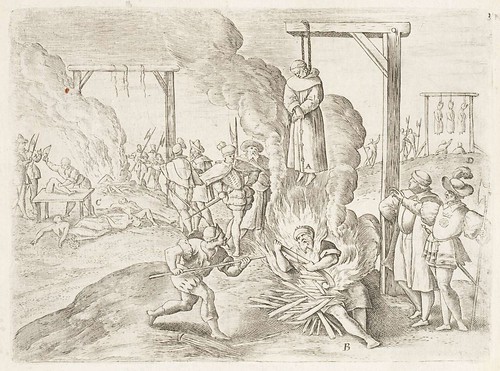
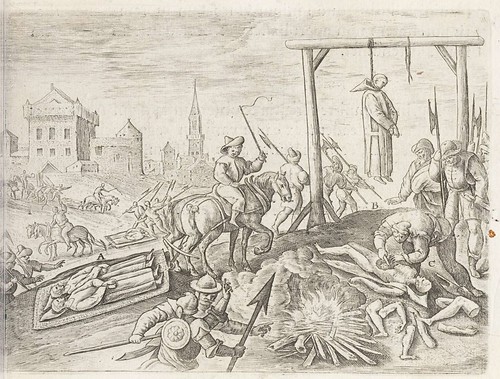
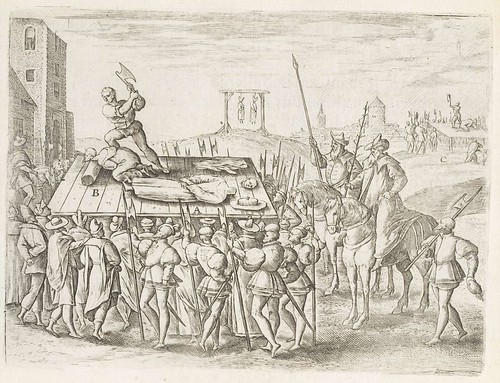
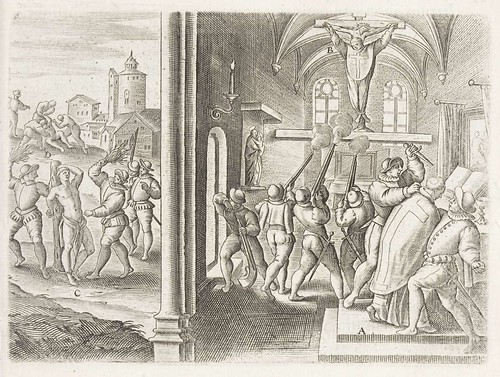
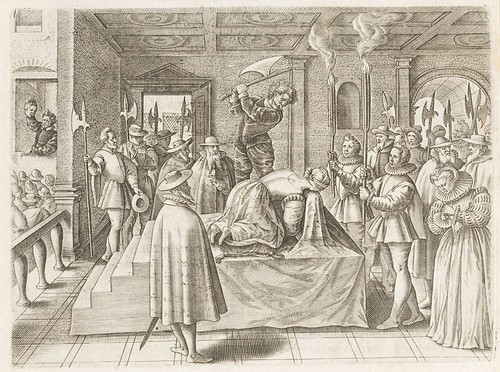
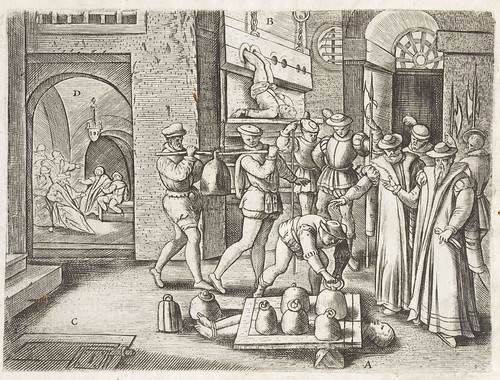
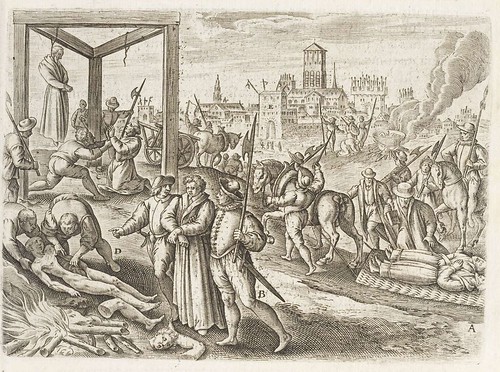
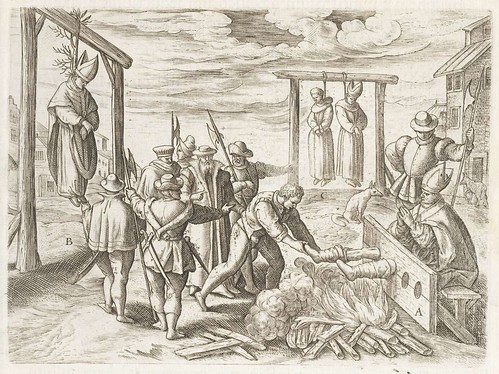
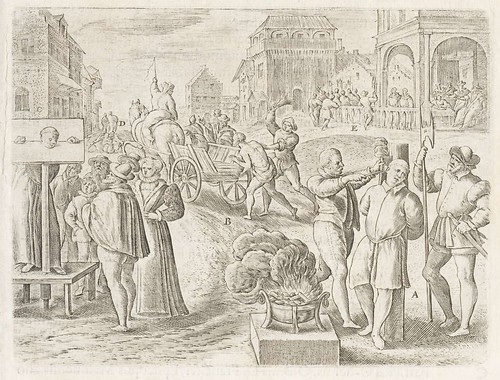
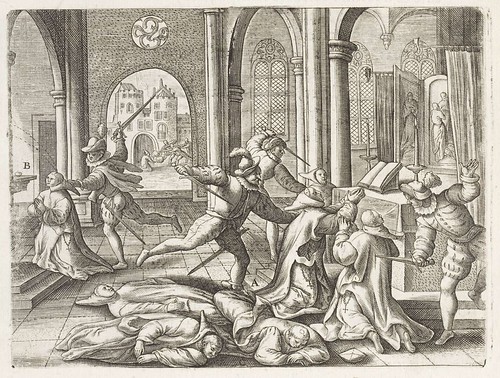
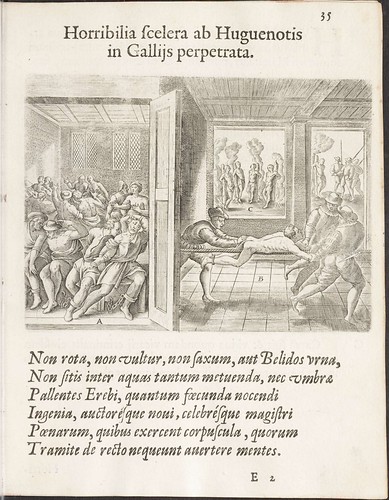
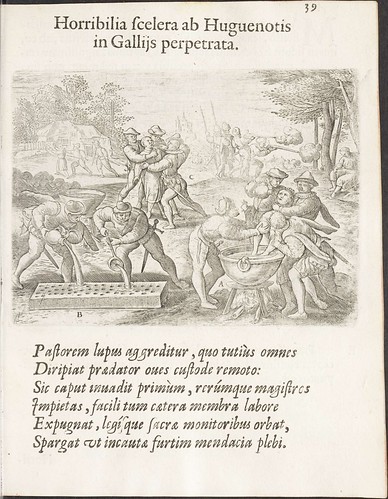
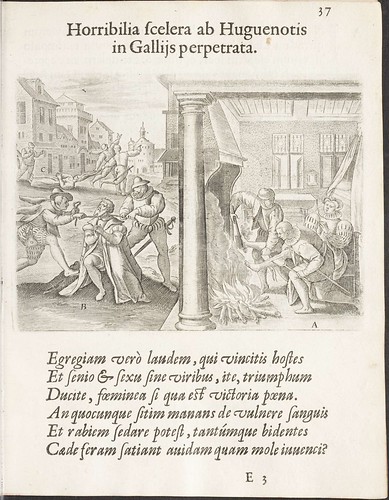
Richard Verstegan (aka Richard Rowlands) (?1548-?1636)
was a Catholic Anglo-Dutch antiquarian, goldsmith and book publisher.
The first half of his life was spent in England, but his religion
prevented him from obtaining a degree from Oxford University, where he
is thought to have studied English history and the Anglo-Saxon language.
Either
following from the prejudice he suffered at Oxford or as a response to
the incarceration and treatment of Mary Queen of Scots* (her 1587 beheading is seen above), Verstegan published the first edition of his martyrologium, 'Theatrum Crudelitatum', in 1583. The book may also have been conceived as a Catholic version of the famous Protestant 'Book of Martyrs' [published in 1563 as 'Actes and Monuments'] by John Foxe.
Verstegan's
book attempted to record, in gruesome detail, the cruelty, torture and
murder of Catholic martyrs in Europe - including English victims under
the reigns of Mary I and Elizabeth I*
- at the hands of Protestant heretics. Upon publication, the author was
arrested and imprisoned for libel against the Crown and all books were
confiscated and destroyed (a single page has been saved). Through the
intervention of friends in the clerical hierarchy, Verstegan was able to
secure his release and he fled the country, ultimately settling in
Antwerp.
Verstegan became a very prolific and influential author
and publisher in his adopted city. One of his early works was the
expanded and definitive version of 'Theatrum Crudelitatum'
which was published in Latin in 1587. At least some of the engravings
were produced by the author (artistic training having been acquired
through his goldsmith apprenticeship). It proved to be a popular book
and translated editions were released soon after for the various
European markets.
Although his publishing house concentrated on
the production of Catholic devotional literature, Verstegan himself was
known to have worked as an intelligence agent for Roman, English and
Jesuit Catholics and he penned political and satirical articles for a
newspaper (making him one of the earliest known journalists), all the
while operating as a book and people smuggler during the Reformation*.
A question mark apparently remains over a lot of works, in terms of
attribution, both because Verstegan's publishing output often lacked
identification marks and also because his son, with the same name,
became increasingly involved in the firm's productions.
The chapter titles from the book (seen as title tags on mouseover of the unordered images above) that are included at the top of each illustrated page [the last three images above show the layout for all illustrated pages] are:
-- Persecutiones adversus Catholicos à Protestantibus Caluinistis excitae in Anglia
-- Horribilia scelera ab Hugenotis in Gallijs perpetrata
-- Horrenda inhumanitatis genera à Geusijs Belgicis peracta
-- Schismaticorum in Anglia crudelitas
- 'Theatrum Crudelitatum Haereticorum Nostri Temporis' {The theatre of cruelty of the heretics of our time} by Richard Verstegan, 1587, is hosted online by HAB Wolfenbüttel.
- Richard Verstegan: New Advent / Wikipedia. There are more citations around, but they tend to be fairly specialised academic articles and the like.
